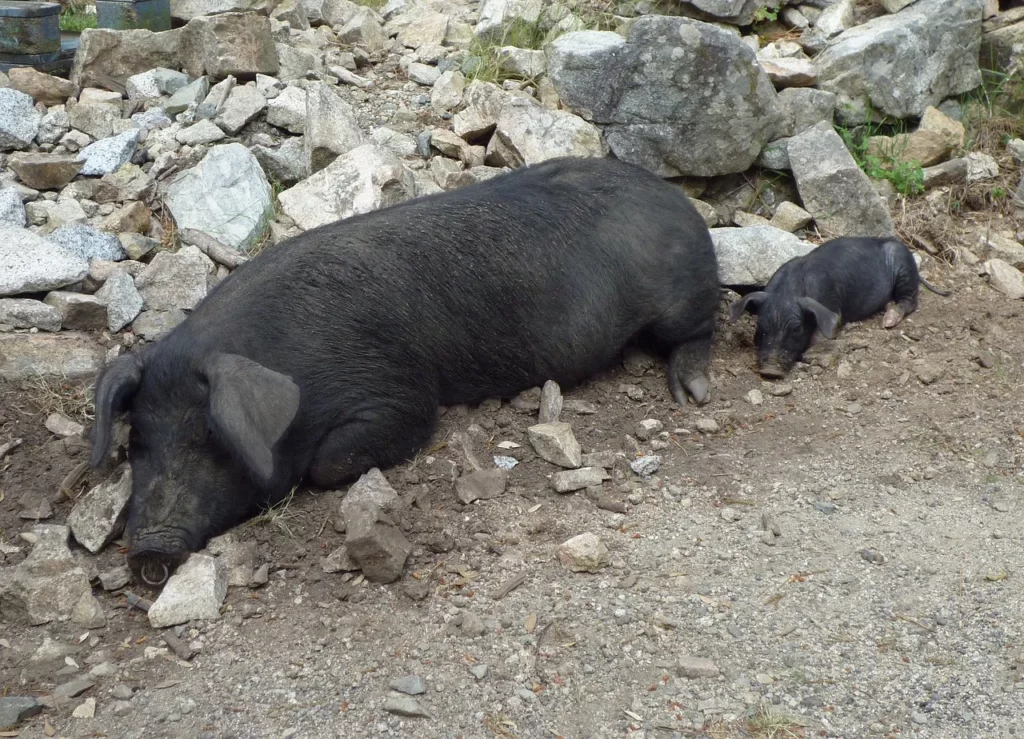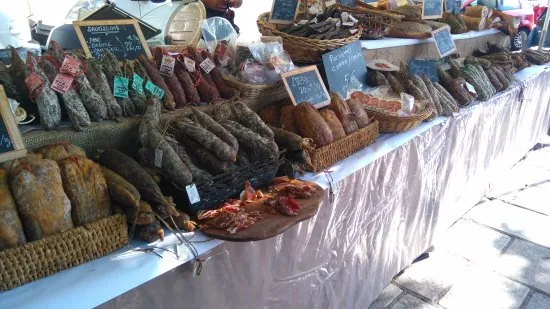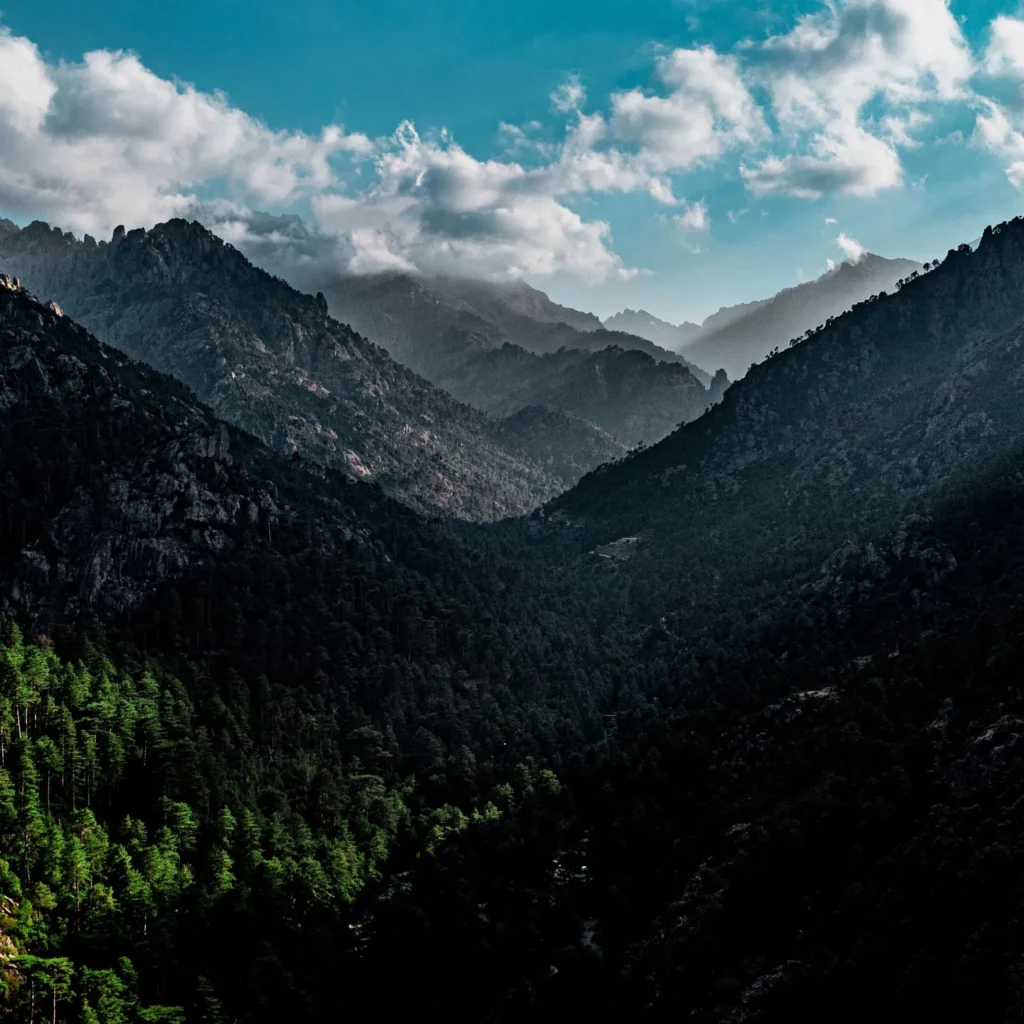The Corsican pig, also known as porcu nustrale, is much more than just a farm animal. It represents a true living heritage that connects nature, gastronomy and the cultural identity of Corsica. Thanks to its unique breeding methods, its hardy breed and its transformation into Corsican PDO charcuterie, it has become one of the island’s flagship products.
In this article, we will explore the history of this pig, its distinctive characteristics, its iconic Corsican charcuterie products (such as prisuttu, coppa di Corsica and lonzu di Corsica), protection labels such as PDO and PGI, as well as its role in traditional cuisine and gastronomic tourism on the island. And who knows, maybe this article will make you want to travel and join us for your holidays, hoping to encounter this iconic animal here in Corsica!
The history and origin of the porcu nustrale
The porcu nustrale is the traditional breed of Corsican pig. Robust and hardy, this small black or brown pig lives mainly in semi-freedom in the scrubland and oak and chestnut forests.
This ancestral practice of extensive farming, still alive in many villages, allows pigs to feed naturally on acorns, chestnuts, roots and wild herbs. This specific diet gives the meat a unique flavour, very different from that of industrial pork.

The unique characteristics of Corsican pork
A hardy and protected breed
Let’s take a look at the unique and rustic characteristics of this pig. Recognised as a local breed, the porcu nustrale is well suited to the mountainous terrain of Corsica. Its slow growth and outdoor lifestyle result in rich, marbled and fragrant meat. It has been present there for centuries. In the 1960s and 1990s, attempts were made to crossbreed it with other pig breeds, which eventually lightened the normally black coat of the Corsican pig to a more reddish colour.
Food with a local flavour
As you will understand from this introduction, Corsican pigs are raised using a method that is still quite unique. In autumn, the pigs feed mainly on chestnuts and acorns, which enriches the meat with woody aromas and natural fatty acids that are beneficial to health, while remaining in semi-freedom in our beautiful region.
An ideal meat for processing
Thanks to its texture and taste, which are due to its diet, Corsican pork is particularly well suited to salting and long-term preservation, the basis of traditional Corsican charcuterie, which we will also discuss in this article. Here too, it is a well-protected and recognised art of French gastronomy.
Photo credit: Yolhan @Colorfulens
Corsican charcuterie: PDO pride and traditions
The processing of Corsican pork is an art that is an integral part of the island’s culture. Several Corsican charcuterie products are now protected by a PDO (Protected Designation of Origin) or a PGI (Protected Geographical Indication), guaranteeing their authenticity.

We also discuss PDOs in relation to Corsicans Bees.
In addition to our pigs, we also have our own bees here in Corsica, each with their own unique characteristics. This article outlines everything that Merendella Campsite has put in place to promote their protection and preservation, in order to maintain sustainable local flora and fauna. If you would like to discover the type of honey these bees produce, click on the button below. See you soon!
Corsican charcuterie
Prisuttu (PDO):
Prisuttu is similar to cured ham, but with its own unique identity. Made exclusively from Corsican pigs raised in semi-freedom, it is salted with coarse dry salt and then left to dry in natural conditions for 12 to 24 months, sometimes longer.
Its flesh is firm but melt-in-the-mouth, with a dark red colour marbled with fat. The taste is intense, slightly woody, with a sweet note linked to the pigs’ diet of chestnuts and acorns. Since 2014, prisuttu has benefited from the Charcuterie de Corse – Prisuttu PDO, which guarantees its origin and production method.
Copa di Corsica (AOP) :
Coppa di Corsica is made from pork loin. After being salted and seasoned, it is stuffed into natural casings and then dried for several months, often between 4 and 6 months minimum.
It is characterised by its marbled appearance and rich but balanced flavour. The fat and lean meat blend harmoniously, resulting in a mild, fragrant charcuterie that is highly appreciated as an aperitif or in traditional Corsican recipes. Since 2012, coppa has been protected by a PDO, a true international recognition of its quality.
Lonzu di Corsica (PDO):
It is characterised by its marbled appearance and rich but balanced flavour. The fat and lean meat blend harmoniously, resulting in a mild, fragrant charcuterie that is highly appreciated as an appetiser or in traditional Corsican recipes. Since 2012, coppa has been protected by a PDO, a true international recognition of its quality.
Figatellu (PGI):
Figatellu is undoubtedly Corsica’s most iconic charcuterie product. Unlike others, it is not a product intended for long ageing but a fresh speciality to be consumed quickly.
Made with pork liver, meat and sometimes a little fat, seasoned and stuffed into natural casings, figatellu is mainly eaten grilled over a wood fire or incorporated into dishes such as chestnut flour polenta or rustic stews.
A seasonal product, it is mainly available from December to March. It has recently been awarded a PGI (Protected Geographical Indication), proof of its importance in Corsican culinary heritage.
Other specialities and local cuisine:
Corsican dry sausage: naturally dried, often very fragrant, sometimes with pepper.
Panzetta: dried pork belly, sometimes smoked, essential in stews.
Corsican pancetta: similar to panzetta but rolled, ideal for cooking.
→ During a stay in Corsica, you can sample these charcuterie products directly from the producers, often located near campsites such as Camping Merendella.
Corsican charcuterie is not only enjoyed as an appetiser. It is also used in traditional dishes
- Grilled figatellu with chestnut flour polenta
- Grilled figatellu with chestnut flour polenta
- Corsican bean and prisuttu soup
- Lonzu stew with seasonal vegetables
Things to remember for enjoying a complete experience based on porcu nustrale recipes:
Corsican pork is inseparable from conviviality and village festivals. And Corsican recipes inevitably highlight the powerful flavour of Corsican pork. It pairs beautifully with Corsican wines (Patrimonio, Ajaccio, Sartène). These are rich, highly aromatic wines that complement Corsican pork and charcuterie perfectly. It’s a very harmonious food and wine pairing that I invite you to discover when you visit Corsica.
Challenges and prospects
Preservation of the breed, traditional skills, short supply chains and tourism:
The modernisation of livestock farming sometimes puts at risk the tradition of semi-free range farming. PDOs and PGIs protect not only products, but also ancestral methods.
More and more producers are focusing on direct sales, local markets and agrotourism. As a result, tasting charcuterie has become not only beneficial for farmers, but also an unmissable experience that I hope you will try for a complete experience of what the Isle of Beauty has to offer.
FAQ about Porcu Nustrale
Conclusion on Corsican pork
Corsican pork is not just meat: it is a symbol of identity and culture, a product of excellence protected by designations of origin. Its native breed, semi-free-range farming and PDO charcuterie make it an essential part of Mediterranean gastronomy.
For holidaymakers, tasting these products directly on site is a unique experience. A stay in Corsica, between sea and mountains, in accommodation close to nature such as Camping Merendella.

Why is Corsica nicknamed the Isle of Beauty?
Corsica has been nicknamed the Isle of Beauty since the 19th century, due to the richness and diversity of its landscapes. Nowhere else in the Mediterranean can you find such a concentration of idyllic beaches, wild mountains, unspoilt forests, fragrant scrubland and secluded coves.
It is also an easily accessible destination: from mainland Britain, there are several means of transport that allow you to get there quickly and cheaply, whether by ferry or plane. In just a few hours, you can leave everyday life behind for a complete change of scenery, with no language barriers or complicated formalities, but with that special charm for which Corsica is renowned.
If this article has made you want to find out more, feel free to check out the Camping Merendella blog: Head to the Blog! You’ll find ideas, advice and inspiration for planning your next holiday in Corsica, close to unspoilt nature, and enjoying everything this island has to offer.



